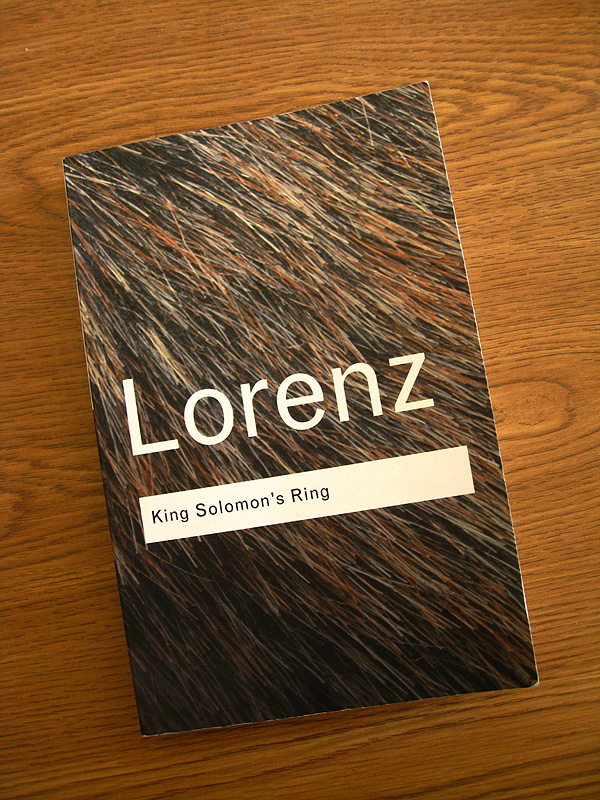Date read: 3.20.10
Book from: Personal collection
Reviewer: Emera

In the chimney the autumn wind sings the song of the elements, and the old firs before my study window wave excitedly with their arms and sing so loudly in chorus that I can hear their sighing melody through the double panes. Suddenly from above, a dozen black, streamlined projectiles shoot across the piece of clouded sky for which my window forms a frame. Heavily as stones they fall, fall to the tops of the firs where they suddenly sprout wings, become birds and then light feather rags that the storm seizes and whirls out of my line of vision, more rapidly than they were borne into it.
[…]
And look what they do with the wind! At first sight, you, poor human being, think that the storm is playing with the birds, like a cat with a mouse, but soon you see, with astonishment, that it is the fury of the elements that here plays the role of the mouse and that the jackdaws are treating the storm exactly as the cat its unfortunate victim. Nearly, but only nearly, do they give the storm its head, let it throw them high, high into the heavens, till they seem to fall upwards, then, with a casual flap of a wing, they turn themselves over, open their pinions for a fraction of a second from below against the wind, and dive – with an acceleration far greater than that of a falling stone – into the depths below. Another tiny jerk of the wing and they return to their normal position and, on close-reefed sails, shoot away with breathless speed into the teeth of the gale, hundreds of yards to the west: this all playfully and without effort, just to spite the stupid wind that tries to drive them towards the east. The sightless monster itself must perform the work of propelling the birds through the air at a rate of well over 80 miles an hour; the jackdaws do nothing to help beyond a few lazy adjustments of their black wings.
Konrad Lorenz (1903-1989) was a Nobel-prize-winning Austrian ethologist (animal behaviorist) particularly famous for his work on imprinting, and is one of the loves of my life. He’s wonderful to read – wise, methodical, wondering, and wryly humorous. Being guided through his observations is like an act of meditation, and every chapter in King Solomon’s Ring (whose title refers to the mythical ring that allowed Solomon to speak with animals) bears multiple, slow re-reads.
Continue reading King Solomon’s Ring, by Konrad Lorenz (1949) E